Essentials on the what to pack list:
No 1: Waterproofs
First up on Julia’s walking holiday packing list are waterproofs. “Wherever you’re going, whatever your destination, pack your waterproofs,”
So many people have heard of the isle of Skye, and millions have watched the movies set there. Everyone wants to go and experience the beauty of Skye for themselves. What they forget is that everyone else has now heard about Skye too. There are the down sides … rain, midges, crowds … but it still has a reputation to beat most other places in the Highlands, except perhaps Loch Ness.
Skye is blessed by being mentioned in music, in movies and in history. It has a distillery, castles, stunning jagged mountains and is eminently accessible now there is a bridge. Is it still an island if it is connected to the mainland by a bridge?
The isle of Skye now has iconic status and has made it on to the “must see” bucket list of so many when they plan their visit to Scotland. Unfortunately many just take a day or 2 on a bus tour. If you can, really try to get under the surface and spend a wee bit more time exploring to find those hidden gems most people whizz past.
Social media seems to have concentrated the effect of tourists travelling to Skye. You can’t get away from tour minibuses if you’re going to visit all those spots you’ve seen on social media: the Old Man of Storr or the Fairy Pools or the Quirang, unless of course you’re going to go at antisocial times. However, Skye is a very large island and if you’re prepared to divert from the popular hotspots and get away from the road, then you’ll probably be able to find your own peaceful viewpoint – but it will take a little more effort than a 20 minute walk.
The spots most people have heard of will be the busiest. One of the reasons many people have heard of them is that they are accessible. Unfortunately the accessibility generates it’s own issues and if you are driving on the isle of Skye you need to watch out not only for sheep on the road, but also for parking opportunities and take care with motor homes. The roads are not designed for wide vehicles. Be very careful to make sure you are not blocking any access and your car is well off the road if at all possible even if it means you might need to walk a wee bit further to get the best photo.
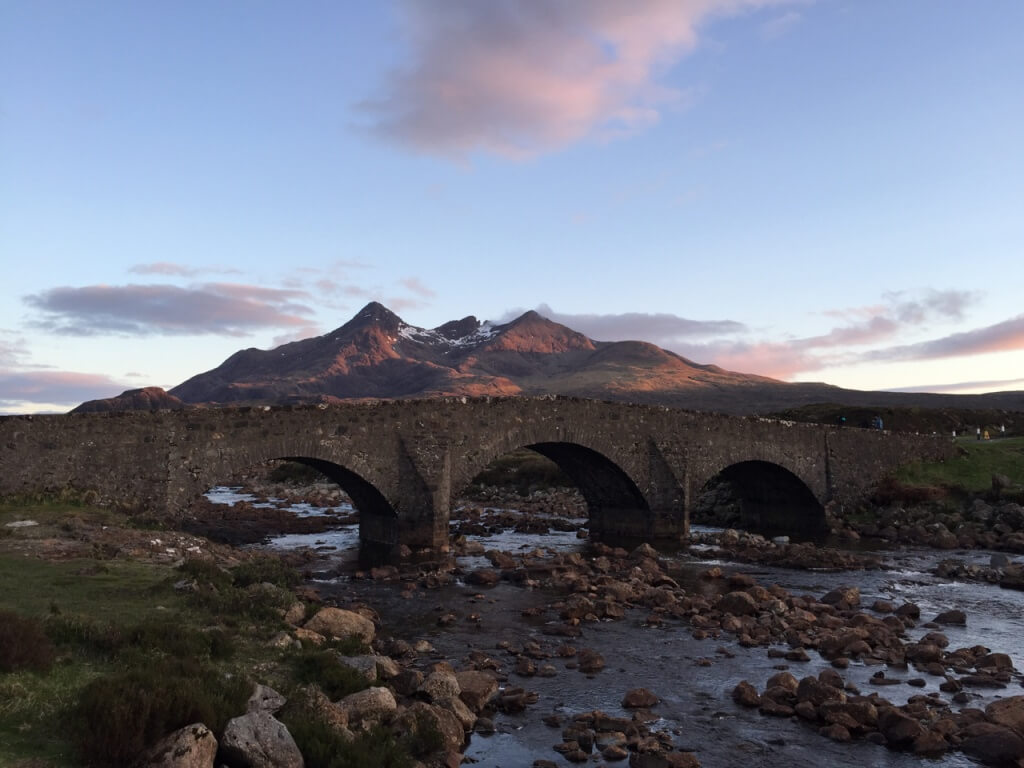
Sunset over Am Basteir from Sligachan on the Isle of Skye during the Skye Munros itinerary
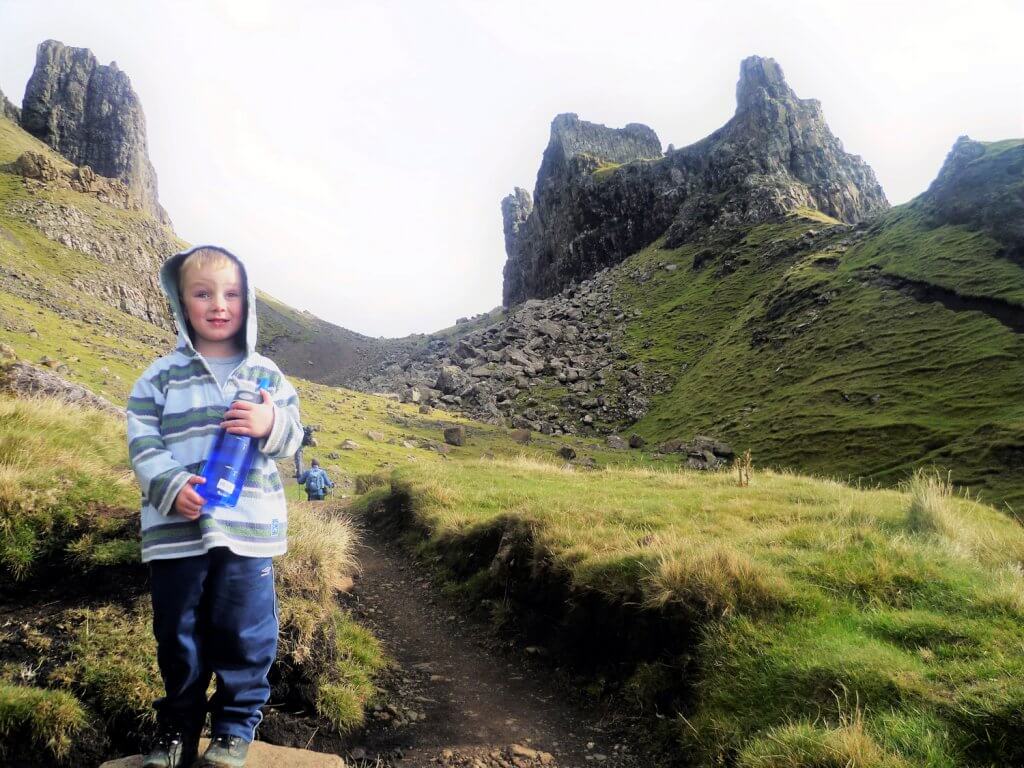
Visiting the Quirang on the Isle of Skye. Easily accessible for most, except wheelchair users.
Not unique to Skye but there are many on the island. However, there is also a herd at Rothiemurchus, near Aviemore (Cairngorms National Park) and near Grantown on Spey on the Revack Estate.
Clearly visible from the road and from Portree on a good day, the Old Man of Storr is a most photogenic rock formation. You can certainly understand why so many make the short walk up to it. It is on the minibus circuit so even on a bad weather day in the main season, starting in May, it can be difficult to find a space in the car park unless you get out early or arrive late. To be honest, unless you can get away from the other tourists, you may not fully appreciate the site anyway at there is nothing like the presence of other people to destroy a peaceful atmosphere, which could affect your memories.
Not so popular with most self-drive tourists due to the more serious nature of the walks. Still there are always people stopping by the Sligachan Hotel to take photos. Up close, they are even more stunning but a guide would be advised if you are intending to head into the high Cuillin as the peaks are quite sheer climbs and require some scrambling or in some cases roped climbing.
If you’re really keen to get up into the mountains, maybe bag the munros, you could join us for either the Skye Munros or our less scary version (ie without the roped climbing) – Skye Cuillin for hillwalkers
Did you know that dinosaurs once walked on Skye? Perhaps one of the lesser known tourist sites on Skye but still popular enough to make the cafe nearby pretty busy.
All these movies have featured shots of some iconic sites on the isle of Skye
The BFG, Macbeth, Stardust, The Land That Time Forgot, Snow White and the Huntsman, 47 Ronin, King Arthur: Legend of the Sword, and Transformers: The Last Knight, The Ridge, Highlander, Made of Honour, Breaking the Waves
Movie map of the Highlands and Skye
Lots of traffic on small roads – be careful driving round Skye, particularly if you have a camper van. Some roads are pretty narrow, or even single track and there are a lot of minibus tours driving round the island.
Lack of accommodation – it is almost compulsory to pre-book in the height of the summer season now.
Midges – the west coast of Scotland is mecca for midges, particularly on a damp, still day
Rain – check out the rain map of Scotland. The further east you go; the less rain you’ll find. However, when the weather is fine, Skye is magical.
North West Scotland is one of the best kept secrets we have had here in the Highlands. While flocks of tourists have visited the isle of Skye, not nearly so many have made the pilgrimage north. This is changing now with the advent of the “North Coast 500”.
It’s interesting isn’t it, what can be done by packaging something in marketing terms. There has always been a road around the north coast of Scotland. The road has always been there. Someone had a great marketing idea and renamed the road as the “North Coast 500” and introduced it to the general public as a must-see driving tour to rival Route 66 in the US. They have done an amazing job and now more and more people are driving up round the north of Scotland. New companies and tour experiences are popping up all over the place. If you do go up, more than likely you’ll meet either a convoy of Lamborginis or a convoy of motorhomes!

The spectacular sandstone peaks of Torridon, over 2500 million years old
This is one of our favourite areas of north west Scotland. Personally we think it is more stunning than the isle of Skye and certainly has hiking to rival the isle of Skye. We take groups over to Torridon nearly every year using a variety of large holiday cottages and getting to know the area well. There’s a small community there so much so that we are recognised in the gallery now.
If you do go to Torridon, be sure to pre-book your accommodation and any places you’d like to eat out as there are a limited number of places to go and also a very limited number of places to top up your supplies. It’s a great area for galleries and crafts with many artists taking their inspiration from the surrounding landscape. If you’d like to explore the Torridon area in depth, you should join us for our Classic Torridon itinerary.
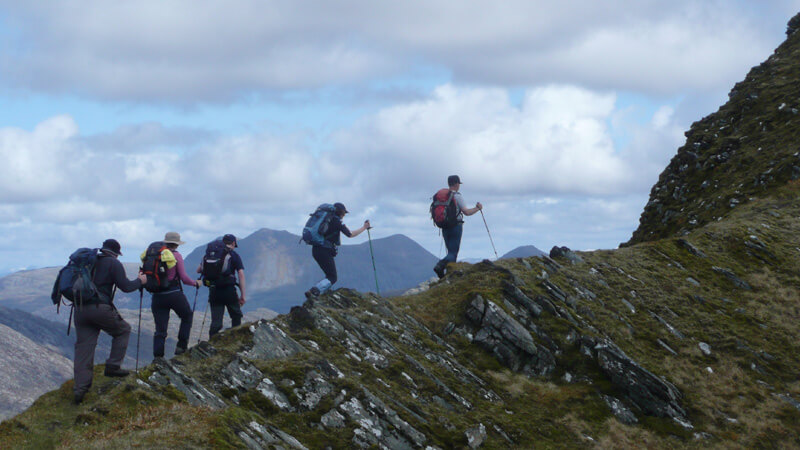
The ridges of the Knoydart peaks
Another favourite area of ours but only really appreciated by those who are looking to get away from mainstream living or those who love to hike. Knoydart is only accessible by boat or by a long walk-in. Wifi has reached the area so you don’t need to be completely without access to the outside world, but don’t expect to get a strong phone signal.
Knoydart is more remote than Skye but just as beautiful. There are plenty of opportunities to see wildlife as there are far fewer people around and there is a gorgeous beach which is right next to the main campsite. The beach is a definite plus – something which Skye lacks mostly.
We’re heading over to Knoydart again in September so if you have a week to spare at the beginning of September, do come and join us.
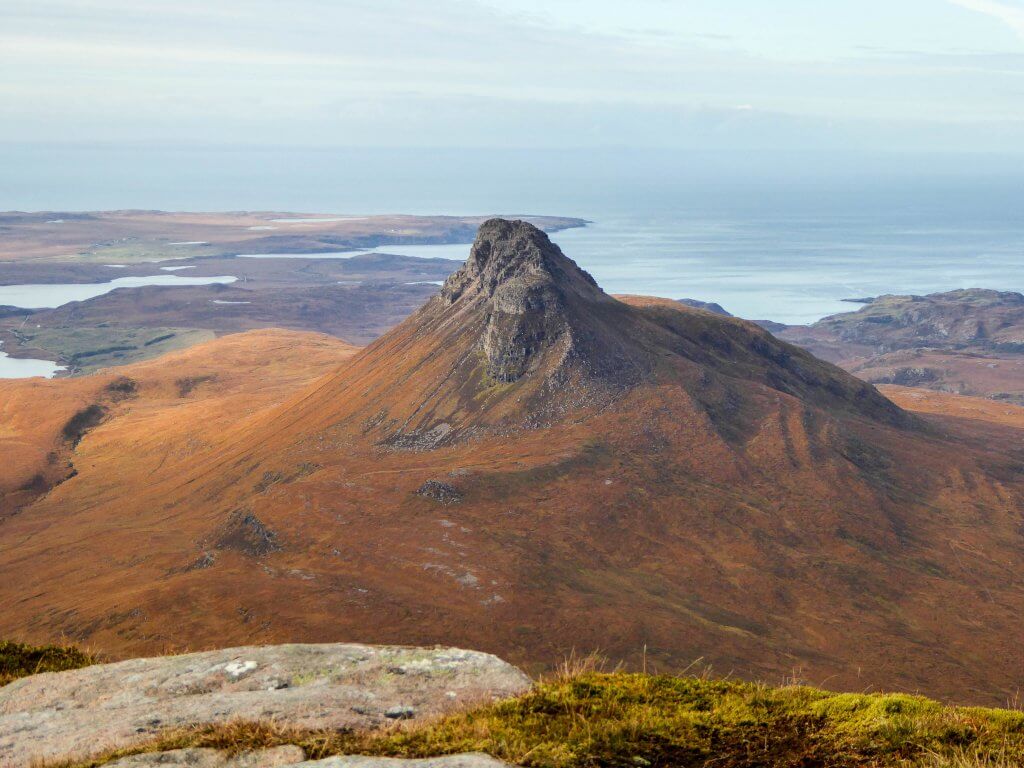
Stac Pollaidh, Assynt, Scotland – north of Inverness
Needless to say we love Assynt and choose to take personal breaks here if our free moments coincide with good weather over there. Our Empty Quarter itinerary makes the most of the most spectacular walking in the area. As with all our trips, you need to take time to slow down and appreciate this area rather than rushing from place to place to fill up your camera with the same shots as everyone else.
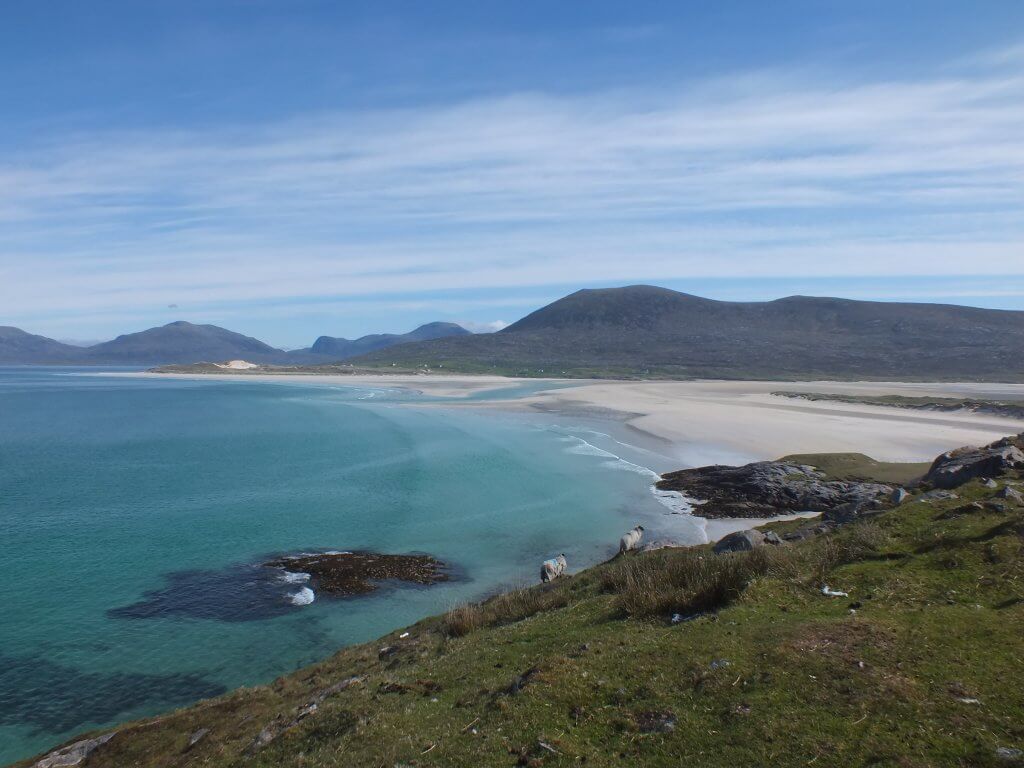
Beautiful beaches at Seilbost and Luskentyre on Harris in the Outer Hebrides
The Outer Hebrides are famous for their beaches. You need to look a little harder to find the hiking, but it is glorious wild country not much explored by others. The islands can absorb a lot of visitors particularly if you can get away from the roads. If you follow the coffin road across Harris, you’re unlikely to see many people at all until you look down on the sandy stretches of Luskentyre. Should you be there at low tide, you’ll probably find a long stretch of empty sand pretty much to yourself.
If you like hiking, you’ll love the Western Isles Wilderness itinerary we’re running at the end of September. Looking forward to some glorious light and photo opportunities.
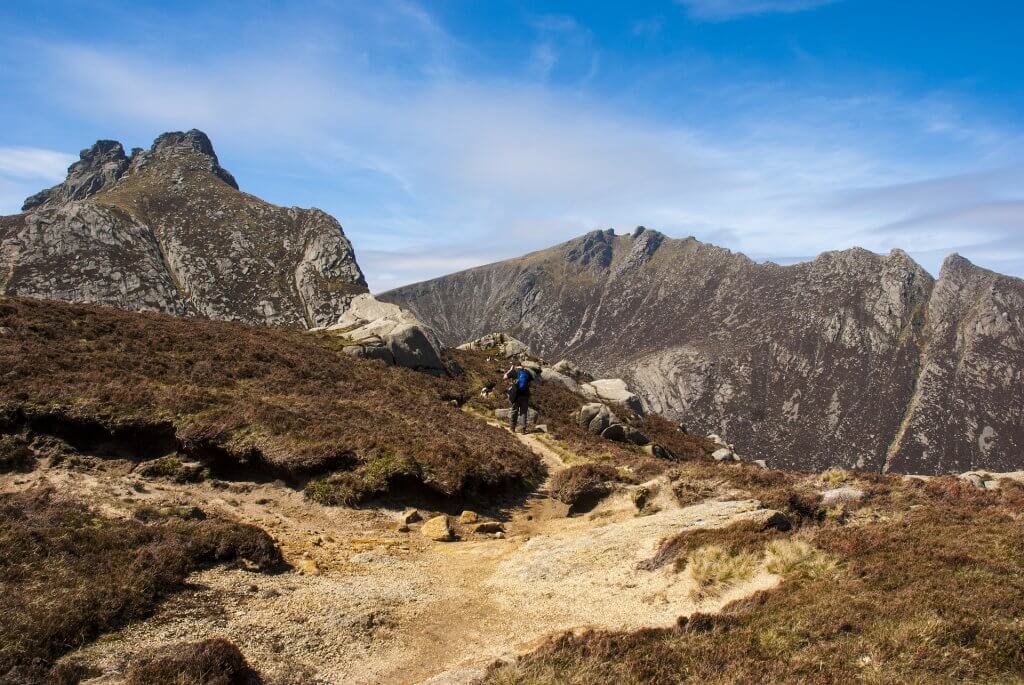
We often talk about Arran being Scotland in miniature. It is very much true. Arran has mountains, beaches, castles and amazing fresh produce. It is relatively accessible from Glasgow, but really you can easily spend a week on the island without being bored.
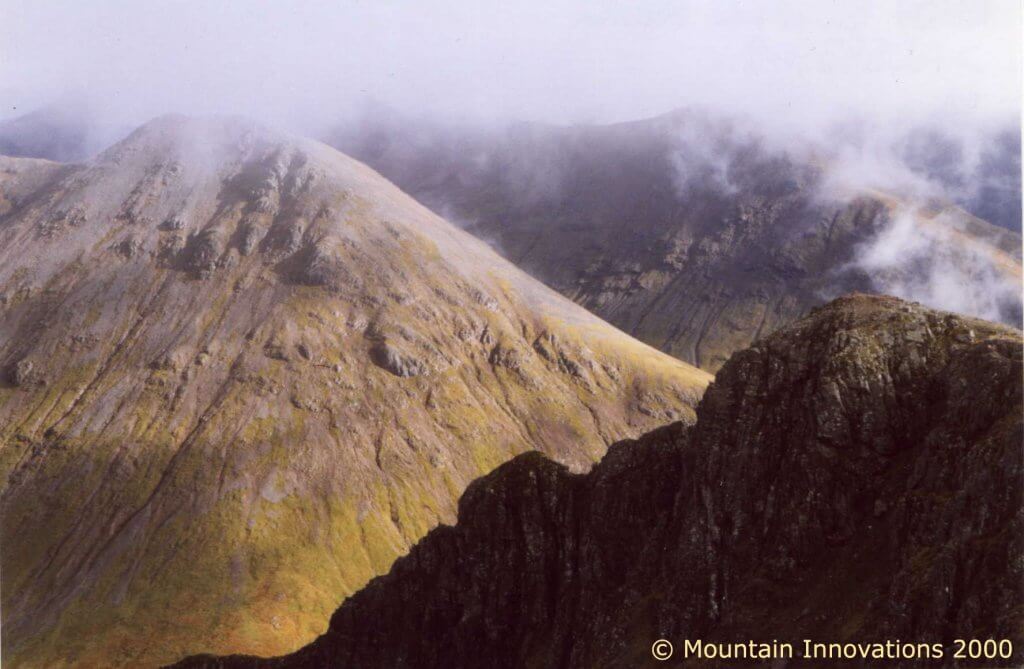
The dramatic hills of Glencoe
Do you really need to say more than just “Glencoe“? The scenery is very dramatic. You can appreciate it from the road, but there are even more fabulous sites to be seen if you are able to hike up into the peaks which line the road. Summer programme will be forthcoming 2019 or 2020.
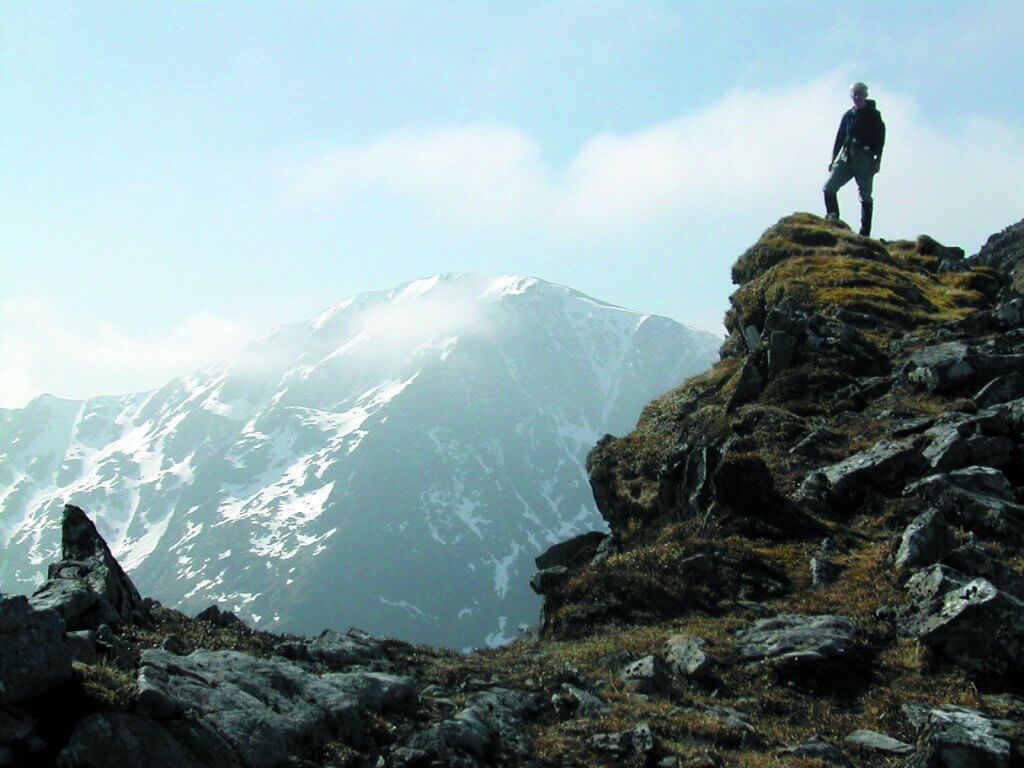
Atop the Aonach Eagach ridge in Glencoe
Planning a summer trip to Scotland and want to go to the Isle of Skye? Make sure you pre-book and resign yourself to being in company if you want to visit the popular sites. All is not lost though as there are ways to avoid the crowds. Personally we like to head out and find our own space, so we tend to keep our visits to Skye out of the main season, which fortunately also means away from the midges and most of the campervan!
We’ve scheduled a new trip for winter 2024. We’re going to be based in Glencoe for a week in March bagging some tasty Munros. It’s a new venture for us so we’ve looked for some spectacular images to illustrate the trip. On a search of Flickr, we found John McSporran. John has kindly agreed not only to lend us some of his spectacular Glencoe images, but he’s also written a brief summary of why he personally finds Glencoe such a fascinating area to explore.
I first began photographing Glencoe about 20 years ago. It is one of those places where the weather is always changing, the light can be fantastic one minute and terrible the next. It can be mean and moody, mystical and magical, but always interesting and frequently awe inspiring. Even on horrible days, that fleeting moment when a beam of light strikes the mountains makes it all worth while.
About 10 years ago I realized that if I wanted the best photos of Glencoe I needed to get high. That’s when I began climbing its mountains. Then I realized that I needed to be ‘up top’ for sunrise and sunset (the golden hours). That’s when I climbed in the dark using a head torch. Then I began to camp out up top. Then I went ‘full on’ and climbed in the dark in mid winter using an ice axe and crampons – just for that one great photograph. Carrying 25 kilos / 55 lbs of camping and photography gear to the top of a mountain can be hard (particularly when in your late 50’s), but the experience of stunning sunrises and sunsets in Glencoe makes it all worth while.
I have met hundreds of people on the Scottish mountains, some I meet many times, some only once, but there is a community spirit amongst those who climb mountains, especially photographers – solitary committed people whose hard shell cracks as soon as we begin to swap stories.
My favourite Glencoe mountains are Beinn a’Chrulaiste and Buachaille Etive Beag. They are not the hardest or the tallest, but they provide the best viewpoints and give sweeping panoramas of the others.
Other favourite locations are:
There are so many great locations, you are spoiled for choice.
We have a saying in Scotland – if you don’t like the weather, wait 15 minutes, it will change. I hope you enjoy your visit to Glencoe.
For more choices of walking holidays in Scotland, head over to our main holiday page
For more information on walking in the Highlands
We’re busy pulling together the final details for all our winter Munro walking trips, including a planned return to the Glencoe area. Despite not having written the prose to promote this itinerary we do already have bookings so best to express your interest as soon as possible.
We are delighted to announce our new, revised itinerary for our Winter Munros trip in Glencoe. We will again be based at River Mill Cottage and will be following the itinerary below as closely as the weather allows:
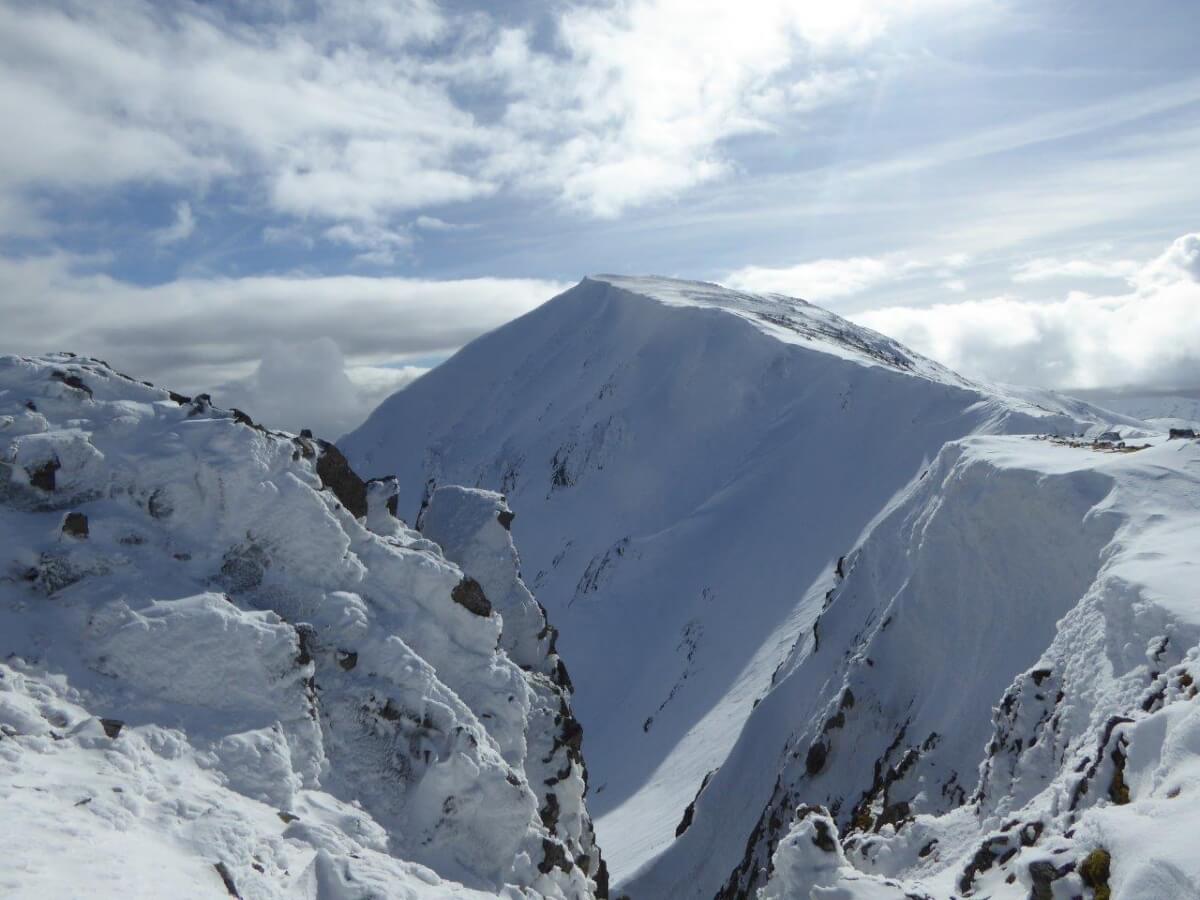
We have been in the Glencoe area before and have designed other itineraries for previous groups. Please do feel free to check these out in the private groups section, but bear in mind that in order to run one of these other itineraries for you we will need plenty of notice in order to arrange accommodation for your group and make sure that there is availbility for your proposed dates. Ideally we would plan a private group tour at least 6 months in advance.
Please bear in mind that since the Covid pandemic it has become increasingly difficult to book accommodation in remote areas with limited options.
Looking back through our photos taken during 2020, it doesn’t seem to have been that bad … but at the time, there were moments.
We’ve put together a wee video of the highlights. Hope you enjoy having a look.
October was a great time for all autumn walks in Scotland. Our Munro baggers who were able to come up and see us were particularly pleased. We almost lost the opportunity to run a trip for our Torridon group when we weren’t able to go to the accommodation we had booked (due to the household mixing rules which came into place from the Scottish Government) but we were still able to substitute a trip based at Fraoch Lodge.
We also ran 2 Munro bagging trips in mid to late October which were well attended within our COVID19 restrictions.
Of course, with all outdoor activities towards the end of the year, you take your chances with the weather, but I think you’ll agree that we certainly managed to strike it pretty lucky for views and all kinds of points of interest to liven up the walks. Andy even found yet another Cairngorm stone to add to his collection (none have been converted into jewelry yet – hint, hint). This one was even more rare – a green Cairngorm, known as a “Beryl” (pictured below).
To see the full selection of images from the Autumn Munros Bash 2020 (and original sizes) please go to the google album.
Other photos from the whole month are included in the gallery. Please comment or contact us directly if you’d like details of any particular photo.
2020 has been an “interesting” year for those who operate hillwalking holidays. It’s been a time to appreciate our Scot Mountain Holidays family and friends. A time when we’ve been thankful to have so many guests who come back time and again to see us and experience a slice of life in the Highlands of Scotland.
Certainly, for us, this has been a year to appreciate living in the Highlands; enjoying the little things; appreciating the ability to stay in touch with friends and family (even when we can’t see them in person); and thinking about new horizons or opportunities to explore.
There are things to be thankful for, despite the restrictions we’ve been forced to live with this year. Hopefully we’ll also be able to learn some lessons for the future. One thing which has been repeatedly emphasised is that being outdoors significantly reduces the risk of contracting the virus. Many people either discovered or re-discovered the joy of the outdoors and many ways to experience the UK this year – without being in crowded places. Long may it last.
Hillwalking has been the province of the middle-aged, middle-class, white person for some time now. I’ve yet to see figures and demographics for the many people who enjoyed the outdoors this summer (2020) but I hope statistics will show that there has been greater diversity. Certainly the rise in mountain rescue callouts would suggest that there has been a greater influx of newbies.
If you know of anyone who’s been bitten by the bug and wants to get into the outdoors more, bag more Munros, explore year-round – pass on our details – we’re always happy to share years of outdoor experience and can offer foraging tips, navigation refreshers/intro courses and winter skills

Social distancing – before it was an “in” thing to do
Fortunately we have several advantages which have allowed us to continue to run trips through the pandemic (except during strict lockdown phases).
We hope that we’ve managed to strike the right balance for you in providing a safe but social environment for you to come and explore the Highlands. Come and see us when travel is allowed once more.
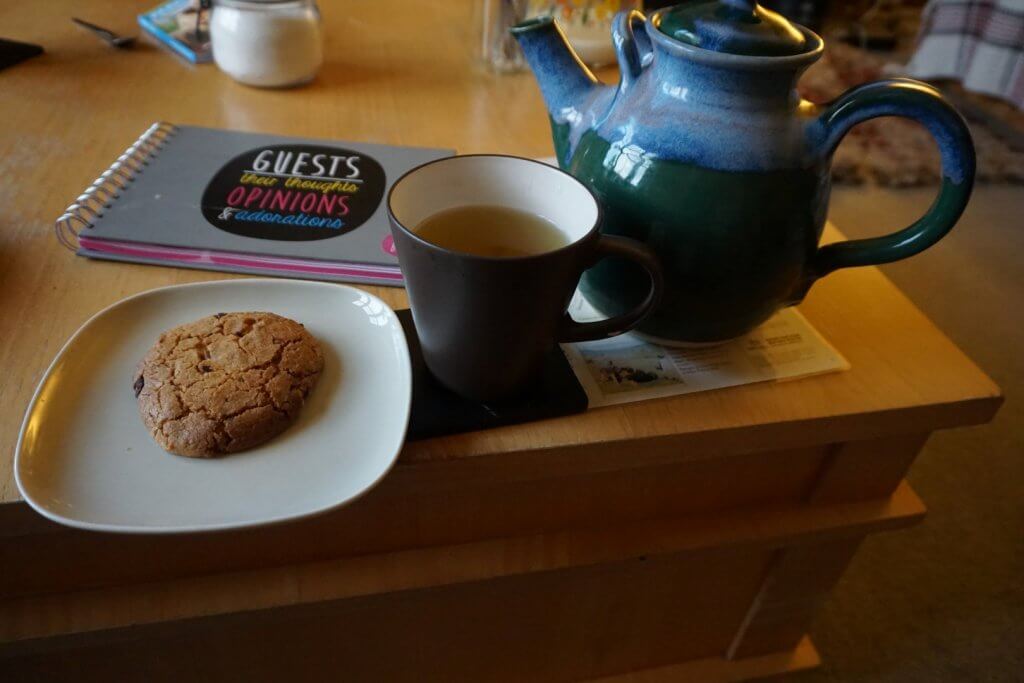
Our temporary advice until COVID is brought under control/defeated is to travel up by car where possible. Alternatively follow all the strictest guidelines on travel and wear a face covering at all times except when eating/drinking.
We hope that movement will be allowed once more for our winter season. Book your visit as soon as you can. There will no doubt be many desperate to get a wee break away from home by the time we’re released once more.
I could say a lot more about how safe it is to come and join us for a hillwalking holiday but really you’d probably be better off asking someone who was able to do just that before #lockdown2 started at the beginning of November. Here are Mala’s recommendations after her trip in September:
“I came to Fraoch Lodge with some nervousness as this was my first holiday on my own. From the moment I met Andy, Rebecca and Gregor, I was made to feel welcome and at ease.
I have had the best week here. I have loved the walks in the Glens, Forests and Lochs (programme) and Andy also kindly threw in a mountain! Through Andy’s knowledge of the environment and geography, I feel as though I have learnt so much about this incredible part of the world.
Rebecca’s cooking has been outstanding. Her inventive, creative cooking, and delicious dishes, and amazing cakes have really been a delight to experience and enjoy. I will miss “Cake o’Clock” and my evening with sage tea & Kindle.
I’ve loved chats and laughs with Gregor. Thank you to you all for making my holiday so special and memorable. Your hospitality and welcome has meant so much. I hope to come back and see you again one day.”
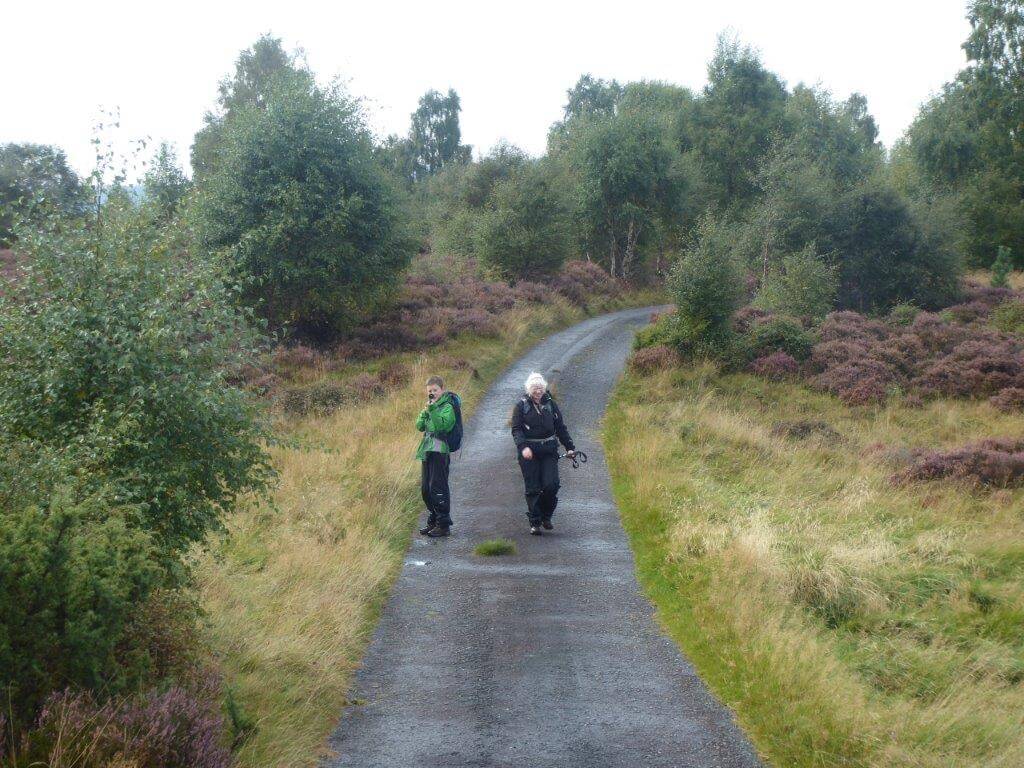
The trouble with planning a hiking vacation in Scotland is that you are almost spoiled for choice. There’s no way you will be able to fit everything in to one vacation.
The scenery on Skye and around the west coast of Scotland is remarkable from the road. It has inspired movies such as “Brave”. The draw is understandable but the disadvantage is that for Scotland it can be “touristy”. It will be unusually busy with other visitors. If you’re looking for a quiet experience of Skye when you have a chance to enjoy the scenery without the crowds, you’ll need to consider taking the time to explore there out of the main tourist season. April, May and September are the best times to head over there. You have a high chance of good weather and a low to non-existent chance of encountering the dreaded midges.
In recent years, particularly since the Land Reform Act (2003), there has been public money available to develop paths across Scotland. This has resulted in a proliferation of way marked long distance routes. The Land Reform Act (2003) formalised the right of access to all land in Scotland, whether privately or publicly owned. Access rights are for outdoor recreation, for crossing land and water, and for some educational and commercial purposes. Exercising access rights, and managing access land, must be done responsibly.
The most well-known of the long distance routes is the the West Highland Way, but there are many others like the Speyside Way (the one to do if you’re in to whisky). Another recently mapped route which is less formally organised is the Cape Wrath Trail. This trail is described by Cameron McNeish as: “It’s the sort of long distance route that most keen walkers dream of. A long tough trek through some of the most majestic, remote and stunningly beautiful landscape you could dare imagine.” You can research more details here: http://www.capewrathtrail.co.uk/foreward.htm There is also a recently published map by Harvey maps covering the area involved.
A full list of long distance paths across Scotland is available here:http://walkhighlands.co.uk/long-distance-routes.shtml They range in length from 338km to 38km. Some can be linked together to make a longer route.
The disadvantage, depending on your point of view, of most long distance paths in Scotland is though they go through mountainous areas most if not all of these routes do not go up the mountains so if you stick to the waymarked route you’ll only be admiring the peaks from afar.
Photo Caption: Long distance path walking in Scotland
There has been quite a lot of investment in path construction and signage in Scotland since the development of the Outdoor Access Code in 2002. There are opportunities virtually everywhere to get out of the car and explore a wee bit to a viewpoint or through spectacular woodlands or around a loch etc. The difficulty is in knowing which option to choose.
WalkHighlands can help with this in that all the walks they list are graded and have an estimated length in distance and time. However, possibly the best way of choosing is to ask your hosts at your accommodation for their recommendation of the best walk to choose and if you have a wee bit more time available take advantage of a guided walk as you will gain so much more insight into the area from the guide’s knowledge. There are ranger guided walks in most areas, particularly in the National Parks like the Cairngorms and the Trossachs which will reduce the cost. Some of these walks are even free. Boat of Garten has it’s own ranger service offering guided walks around the woods behind the village. The RSPB also offer guided walks on the Abernethy reserve.
The advantage of booking a walk with a guide is that you’ll be able to get off the beaten track with confidence. You might even be able to do a longer walk or go higher than you would be confident doing on your own.
A guide will also have extensive knowledge of the local folklore, the environment, the flora and fauna as well as the terrain through which you are hiking. There really is nothing better for bringing the area alive to you. As a student or cash strapped tourist you may consider the cost relatively high. However when you look at the cost of eating in a restaurant or your accommodation for the night, you’ll realise that on an hourly rate your guide is not charging a lot of money. A qualified mountain leader will have invested years of training into his qualification not to mention the cost of the training course itself.
A qualified mountain leader (or accompagnateur) will charge from £150 – £200 for a day out. This fee will be split across the clients in the group. The larger your group of family the less the cost per individual. The rewards of going out with a guide for the day are however beyond price as you will learn so much more about the area which you won’t find in the guidebooks.
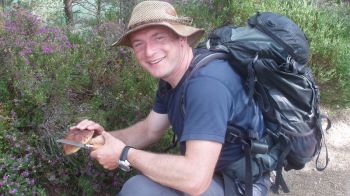
Most organised hiking tours will explore only one area in depth. While this approach is not for everyone (many people visit a country with a tick list of sights they want to visit – which are inevitably the same spots 90% of visitors also want to see, resulting in overcrowding), if you go on an organised vacation you are often more likely to have a more genuine and authentic experience of the country you are visiting.
It is worth checking that the company you book with has a philosophy which appeals to you. Also that the structure of the trip suits your priorities. For example, if you are thinking of booking with Scot Mountain Holidays but it is important to you to have 5 star hotel style accommodation, rather than a home away from home, you will probably look elsewhere for your trip. The philosophy behind our vacations is that our guests stay within our home. They immerse themselves in the atmosphere and feel comfortable discussing all aspects of life in Scotland.
Of course, if you have enough time you could consider a shorter, organised trip as part of your vacation and tour the rest of the country by car/bus.
Think about access – a major consideration as part of the planning. Some areas of the Highlands are more difficult to reach than others. For our organised vacations we have tried to make it as easy as possible for our guest to access them. We offer pick ups from Aviemore station and Inverness airport. In the Cairngorms, we are lucky enough to be near the major route north from Edinburgh – the A9, which makes it very efficient to get here.
It may look like it isn’t far to reach some areas of the Highlands but travelling on narrow, sometimes single track roads, will take longer than anticipated.
When planning your trip bear in mind that reaching some areas by public transport can be time-consuming. Many of the routes used have to go around rather than through the mountains.
Julia Bradbury recently published her tips on what to pack for walking holidays in the Express. We thought we’d compare our packing lists. Let’s have a look at Julia’s top picks.
This is not by any means intended to be a comprehensive kit list. Don’t use it to pack for your next walking break, but we just wanted to highlight one or two things which have been essential on our own trips plus have a quick look at items we’d consider non-essential/luxury items as we think it’s essential to have something in your pack which gives you some additional pleasure at the end of the day.
First up on Julia’s walking holiday packing list are waterproofs. “Wherever you’re going, whatever your destination, pack your waterproofs,”
It seems obvious to an experienced walker that you should always pack your waterproofs, particularly if you are an experienced walker in the UK. You expect the weather to change. However, if most of your walking has been done in a continental climate, you might be forgiven for expecting the weather to be consistent. On our recent holiday in the Sierra Nevada (Spain), we did meet some hikers (even on the highest peak, Mulhacen, at over 3000m) who set out without waterproofs.
Lack of suitable clothing could cause you to have to turn back from your objective.
Be a scout when it comes to a hiking vacation and “be prepared”.

Julia also emphasises the importance of good walking boots – and you might want to consider investing in more than one pair.
“Make sure you’ve got the right kind of boots for the terrain you’re going to be walking through,”
“If you’re going for a boot that will suit all walks then an ankle boot is vital,” she said.
It might seem obvious to talk about boots for a walking trip, but not everyone thinks to pack walking boots. There are many who think that trainers will do. There are also extensive discussions and debates online in various walking/hiking forums as to the benefits and disadvantages of boots versus walking shoes. Those who have opinions either way are quite vociferous about the benefits on their side of the argument.
The most important thing is that your feet are comfortable.
Uncomfortable feet is the worst experience you could have if you’re committed to a hiking vacation. Feet can be uncomfortable in different ways but in our experience along with boots an essential item to pack is foot cream.
Another option is approach shoes which are becoming more popular. These are good for rough track terrain but not for steep inclines.
She added: “It’s good to have them in your backpack if you get your boots wet or you cross a river or your feet get wet for whatever reason.”
A second pair of footwear is in our opinion essential to the comfort of your feet. The last thing you want to do after a day out hiking in your main boots is to put them back on to go out in the evening
You must look after your feet as they are bearing the burden all day and to keep going you need to pamper them.
WHERE WE START TO DISAGREE
A more surprising item Julia likes to take is a tinted lip balm. “It gives you sun protection and a splash of colour on the lips as well.”
are also a must for a walking holiday, said Julia.
The walking enthusiast also advises taking a single strap rucksack, and weighing scales.
We’d have to agree with Julia’s top 2 picks. It seems really obvious to pack your boots and waterproofs if you’re heading off for a walking holiday (particularly if your destination is Scotland) but believe me sometimes people leave out the water/windproofs if they think they’re heading off to a warm destination, but if you’re going mountain walking anywhere you should always be prepared for the weather to turn.
On our recent trip to Spain there were other walkers who were caught out by the weather turning on Mulhacen. We all walked up in glorious sunshine, but woke up to drizzle. The higher up the mountain we went, the windier and colder it became. Those without waterproofs really suffered in the wind.
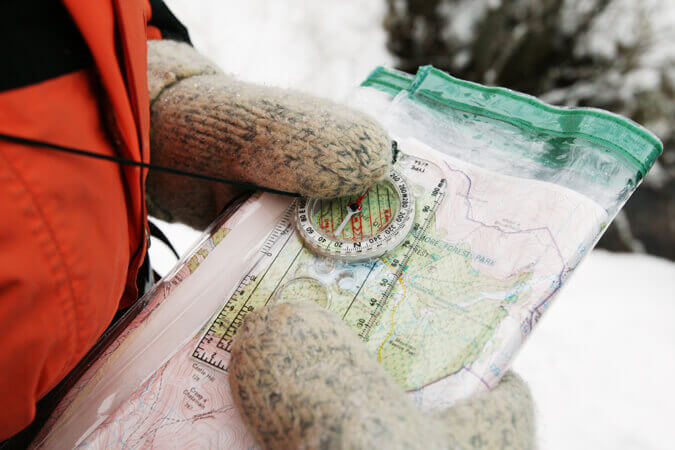
Dachstein mitts don’t necessarily mean that you won’t be able to use a compass or to navigate, as shown by our director Andy Bateman
For the other 3 items – are they really necessary? Are there other more important things you should make sure you have first?
Our top tips to you personally would be:
bring a map and if you have one a GPS &/or compass
Even on a guided trip it is useful to have your own map. These days you can quite easily get digital mapping on your phone. Personally we don’t like to rely on this as we don’t have the most up-to-date phones and the screen size can be really irritating. It is useful to be able to enlarge portions of the map though, especially as your eyes start to find the small print a bit more of a strain. However, if you’re going to rely on digital images, make sure you have an extra power pack for your phone. Personally this would rank higher up on our own list than flipflops or lip balm.
Because we can’t go on holiday in the main summer season (a dream for the future maybe), and therefore we are almost always away in October, we always pack gloves and hat. If you’re travelling in the main part of the summer season we’d recommend always packing a sunhat and sunscreen (even in Scotland) but not necessarily a midge net. Check our blog on how to have a midge free vacation
Be sure to have at least one item for yourself which you would consider a luxury (a bit like Desert Island Discs).
Our luxury items include:
a book/kindle
a knitting project
a teddy (perhaps only a consideration for the youngest member of your group)
chocolate
your favourite hiking snack which you buy at home
tea (for the British audience) or your favourite coffee
But don’t forget to leave a wee bit of space (if you can) for souvenirs!
What would your luxury item be?
Are you planning to visit Scotland for self guided walking holidays? There are some important factors which should influence your planning.
Just because you don’t consider the hills in Scotland to be mountains by the standards of your country, doesn’t mean that you shouldn’t treat the routes with respect. Remember when you do your planning that a lot of routes are not way marked. Our experience of hiking in Europe is that most of the routes are signposted and marked with paint on the rocks and/or trees. Don’t expect this to be the case in Scotland, unless you are following an official long distance path like the West Highland Way.
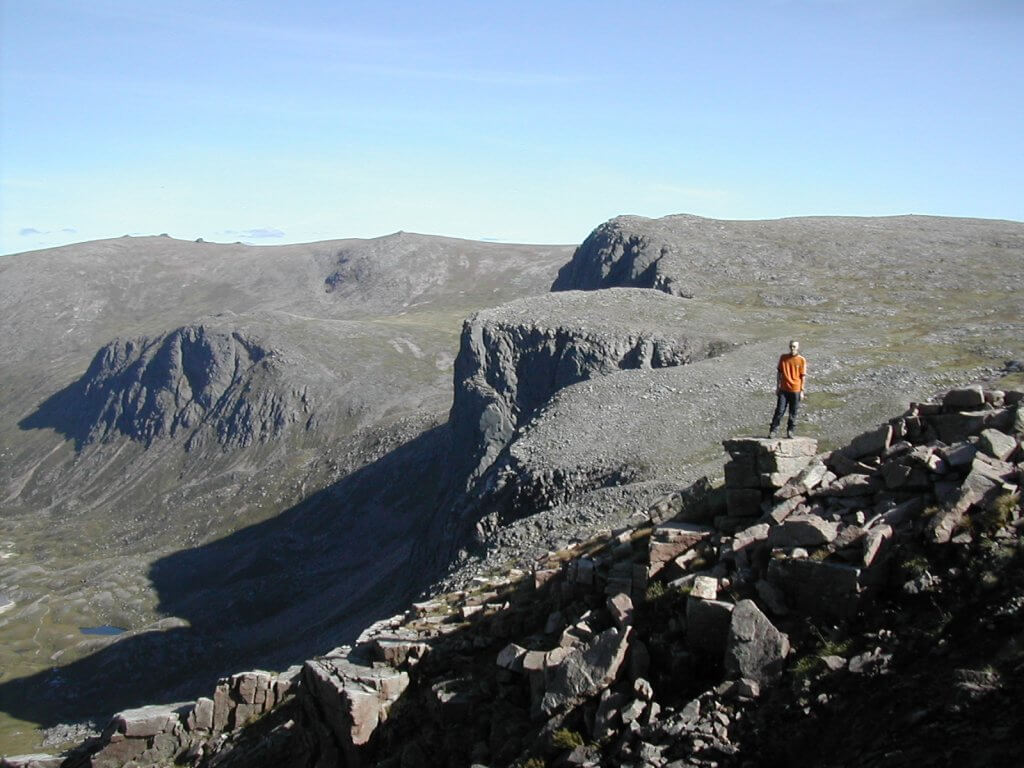
Deep in the Cairngorms National park. What a view!
The locals are the ones who will know if bridges have been washed away; if the streams are running high and you need to be careful with the river crossings; when there is tree felling going on; if the paths have been diverted; or in winter, particular avalanche hazards
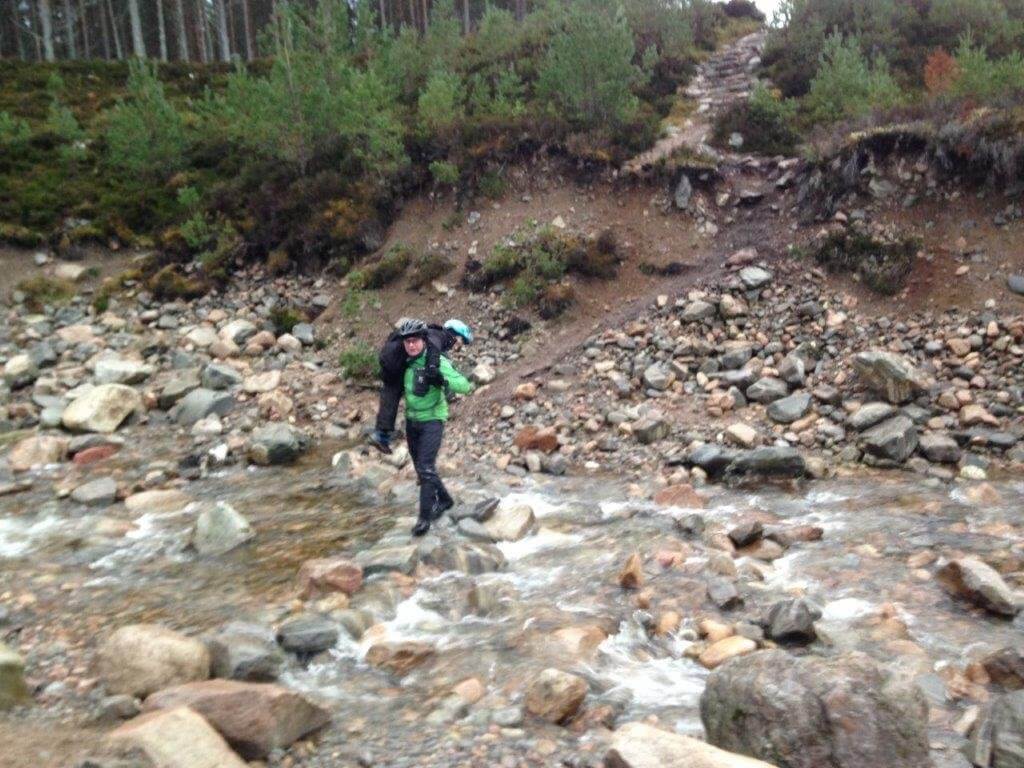
The river in Glen Feshie has undergone some serious flooding causing parts of the path to collapse and the river to change its path
– if not, then be sure to take a refresher before you head into the higher level terrain.
Our maps are very good but you will need a proper map for hill/mountain hiking. Look for either Ordnance survey or Harvey’s maps. You can use Viewranger to plan your routes but do not expect to navigate by digital maps in the hills. Your battery could die and the screen is not big enough. Don’t worry though – if you’re based at Fraoch Lodge and haven’t had time to pick up a local map, we do stock them. We also have mountain bike specialised maps for select routes around the Cairngorms.
If you’re not sure of your navigational skills
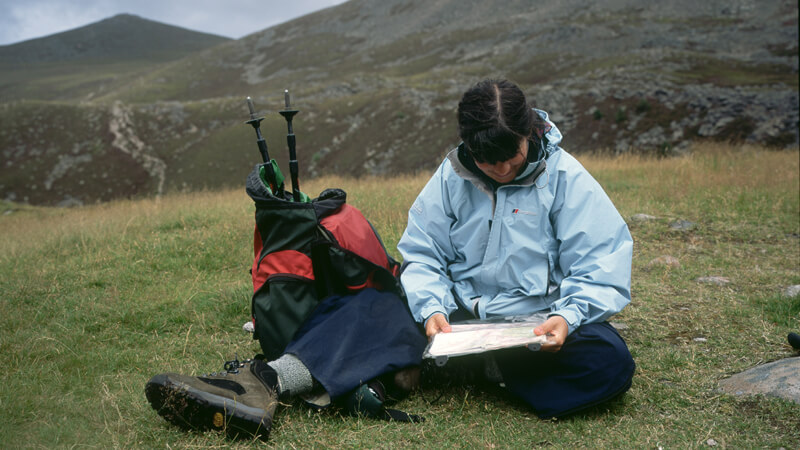
A female walker seen sitting down resting and studying her map, wearing her boots and waterproof clothing, with her rusksack and walking poles, Cairngorm Mountains, Scotland.
Model Release
Photograph by David Mansell 07831 559901 mobile
There is a reason why Scottish people talk about the weather so much and if you hear someone talk about 3 or 4 seasons in one day – that means that the weather will be changeable on a daily/minute-by-minute basis.
When we say you should have a water/wind proof jacket, we don’t mean a cape. In our windy conditions you need a jacket which fits your body and won’t catch in the wind. If you’re looking for a new jacket or waterproof pants/trousers, we highly recommend the following Scottish companies: Cioch direct – for made to measure nikwax analog outer layers or Findra – for quality, eco-friendly outdoor clothing
– which is also shared with our guests on the organised self-guided walks
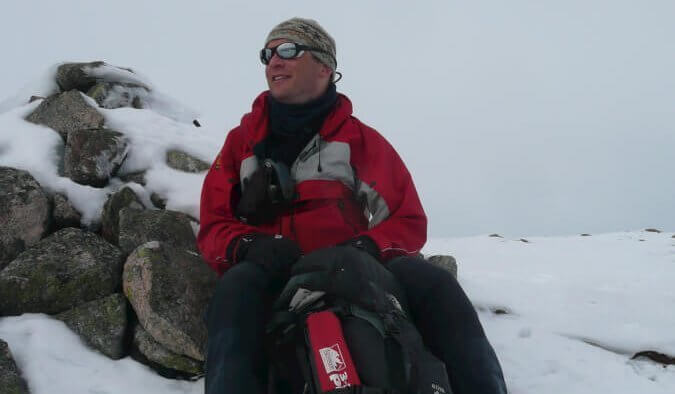
It is really important to make sure that your feet are comfortable. The smallest blister or hotspot can ruin your hiking plans. You’ve probably brought over your normal comfortable hiking shoes/boots but haven’t made allowances for the rough terrain you could be walking through. Just make sure you keep an eye on your feet. Pamper them if necessary. There are now plenty of excellent artisan soaps and hand/body creams available throughout Scotland. We highly recommend Highland Soaps, Arran aromatics or the Soap Bothy. Highland Soaps do a bog mrytle scented lotion/soap which has the added bonus of being repellent to midges!
This is particularly important if you are attempting a long hike like the Lairig Ghru
If you take long, undisciplined breaks then the end of the day is just going to keep disappearing into the distance. If you don’t take enough breaks, then you’ll become more tired than you should be and might find the walk very disheartening.
Our recommendation is to walk for about 80 minutes before taking a 10 minute break when you make sure to eat some of your picnic/snacks and take a healthy drink. Be disciplined with your breaks on longer hikes. At the end of the day it will make for a much more enjoyable experience.
This relates to the 4 seasons in one day weather we have here in the Highlands. You never quite know what you’re going to encounter during the day, even if you have religiously checked the forecast. Andy recommends: in summer, dress cool (relatively – light trousers/pants rather than shorts) on the legs), and warmer on top, as it is easier to regulate your temperature by putting on or taking off a fleece/jacket than removing long johns when you get too hot. In winter, dress warm on the legs.
Midges in Scotland have a reputation which far outweighs their size, but perhaps not their numbers.
Here in Scotland, we’re not subtle in our campaign to drive the visitors away. We emphasise the rain and then we start with the midge stories. And still people want to come. Well we’ve come up with a plan for you. We’re going to try and make sure you go back home without mentioning midge horror stories and without any stories of being drenched by rain. Our plan: visit the east.
In the Highlands of Scotland, particularly in the Cairngorms, we can have an early frost in September or a late frost in May. Midges can’t survive a frost. If you arrive in Scotland, before the weather has warmed up too much you are unlikely to see many midges. Also if you visit in May or early September, you are also likely to encounter the best weather conditions Scotland has to offer. May 2018 (and June) have been exceptional in sunlight terms, but there is also now an increasing issue with the swarms of midges. Over on the west coast, it can be difficult to find builders at this time of year. Their work requires that they remain stationary or at least around the same site for extended periods of time, and the midges just won’t leave them alone. However, direct sunlight and windy conditions do mean that there are few if any midges around.
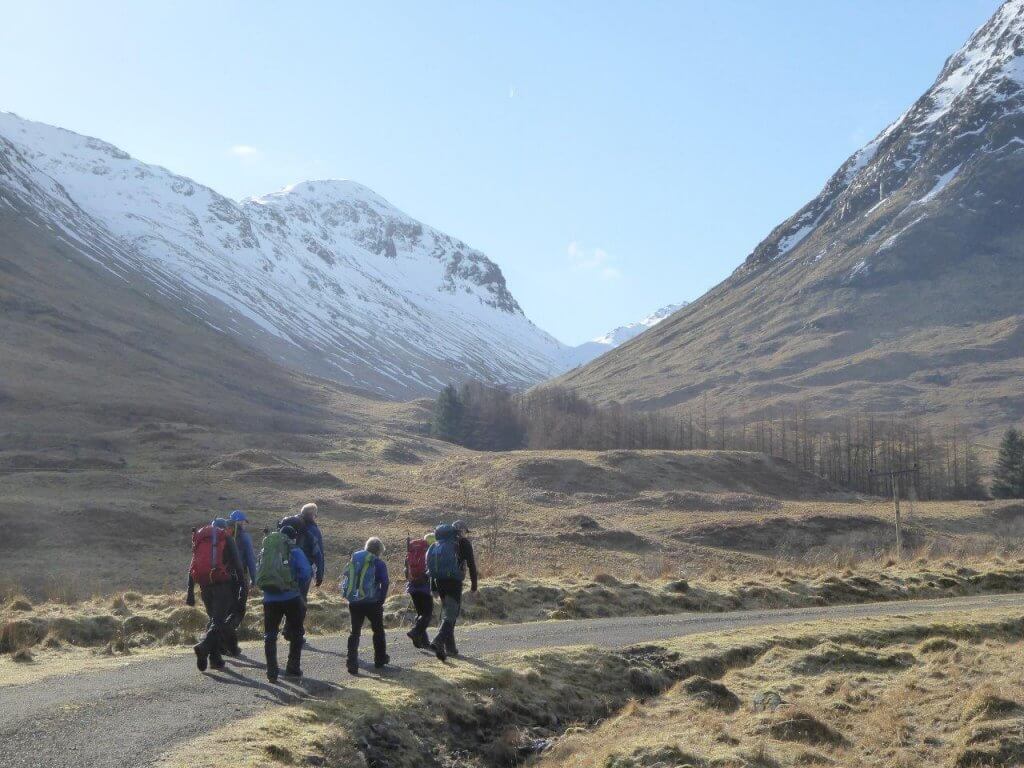
This photo was taken in Glencoe in March. This is when you can really enjoy hiking in the area. There is still snow on the ground, so it is not for the faint-hearted but there are no midges in Scotland and the air clarity is amazing. Perfect for photography.
We plan all our west coast walking holidays around both the best weather conditions and the height of the midge season. We rarely if ever, go to the west of Scotland between June and the end of August.
We have our home base in Boat of Garten in the Cairngorms National Park for a number of reasons. High on the list is the lack of midges, in general. On a still, damp morning/evening, you definitely become aware of their presence in season, but more often than not we rarely encounter them. They can be a bother in the Cairngorms, but the drier weather here and the sometimes windy conditions, keep the levels of midge down to manageable levels.
Midges in Scotland do love damp forest conditions though as the trees provide them with shelter from the wind and the sun, so be careful if you picnic in the woods.
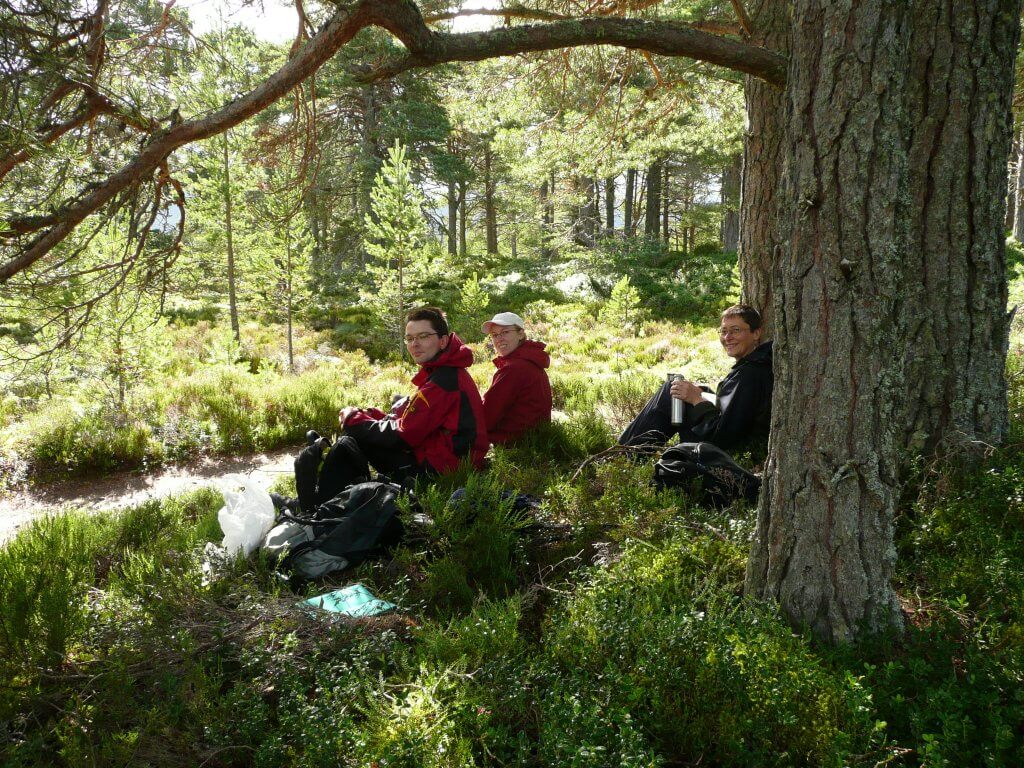
Relaxing in the shelter of the trees – beware the midges on a wind free day.
On still, damp days our best advice would be to engage in something high speed (eg mountain biking or road biking or zip lining) which will keep the midges away from you as you generate your own “wind” ie slip stream. You’ll be moving too fast for them to keep up.
Failing something high adrenaline you could just admire the scenery from the seclusion of your car, being sure to insulate yourself from the outdoors with your air conditioning system or alternatively indulge yourself in a bit of culture or city life for the day.
There are plenty of museums you can visit, even in the Highlands. Or try a castle or distillery.
We recommend the following distillery tours:
Tomatin (especially if you have under-18s in your party)
Glenlivet (regular tours which are translated into most major European languages)
Glenfarclas (a more unique and family atmosphere than other distilleries)
Aberlour (highly regarded and recommended to us)
Or try to Speyside Cooperage – a unique opportunity to see the traditional coopers at work making and refurbishing the casks which are a vital part of the whisky industry.
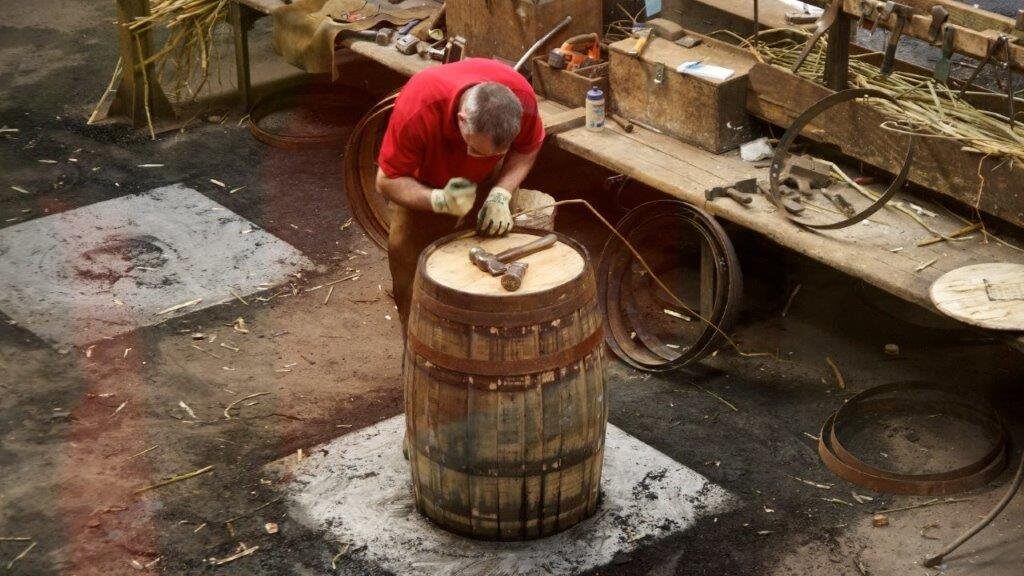
A cooper hard at work repairing casks at the Speyside Cooperage
Midges are so tiny that they can’t tolerate any more than a very light breeze. There is a fine balance in how much wind you can enjoy before it starts to affect your enjoyment of your day out, but hopefully you will find there is a strong enough breeze to keep the midges away, but not too strong to prevent you from enjoying your hike. The strength of wind you can tolerate yourself will depend on your experience and body mass. If the wind is starting to push you around, you’ll stop enjoying your day out and be concentrating too much on trying to maintain a straight line to your destination.
This is probably the hardest one to do if this is your dream vacation to Scotland. Almost everyone has at least one west coast destination on their itinerary, usually Skye. Stock up on plenty of repellent if you’re heading over between June and mid-September.
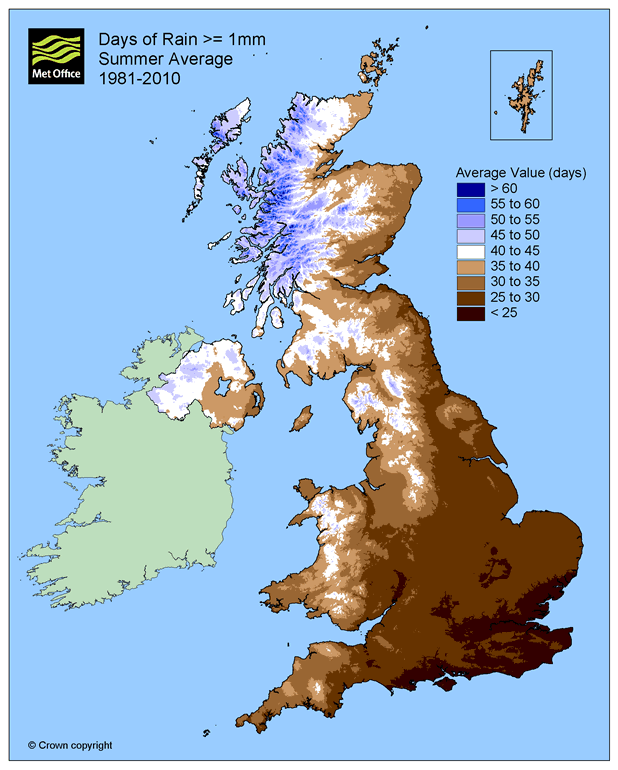
This is relatively easy advice to follow in early summer as dawn takes place so early and dusk so late, but by August it is worth being aware of the sunrise and sunset times.
If you’re planning an active vacation in Scotland, it’s worth checking out our programme as we have planned to include the best of the weather and the best of the midge free opportunities across the Highlands. We can also plan a tailor-made trip for you. If you base yourself with us we have good access to most other areas of the Highlands (except Skye and the Outer Hebrides) and can make the most of the best weather where ever it is.
Other precautions you can take:
For a light-hearted summary take a look at the video below:
All content © Copyright Scot Mountain Holidays 2025
Responsive web design by Summit Web Solutions